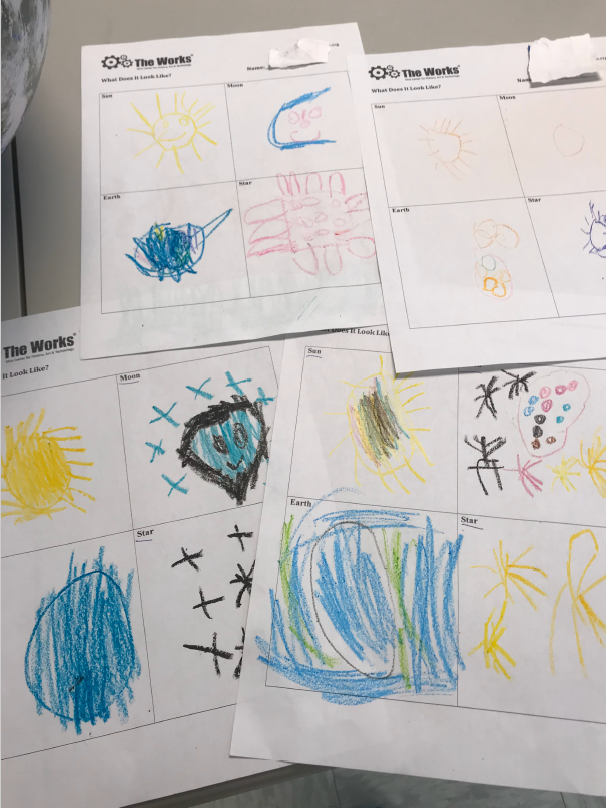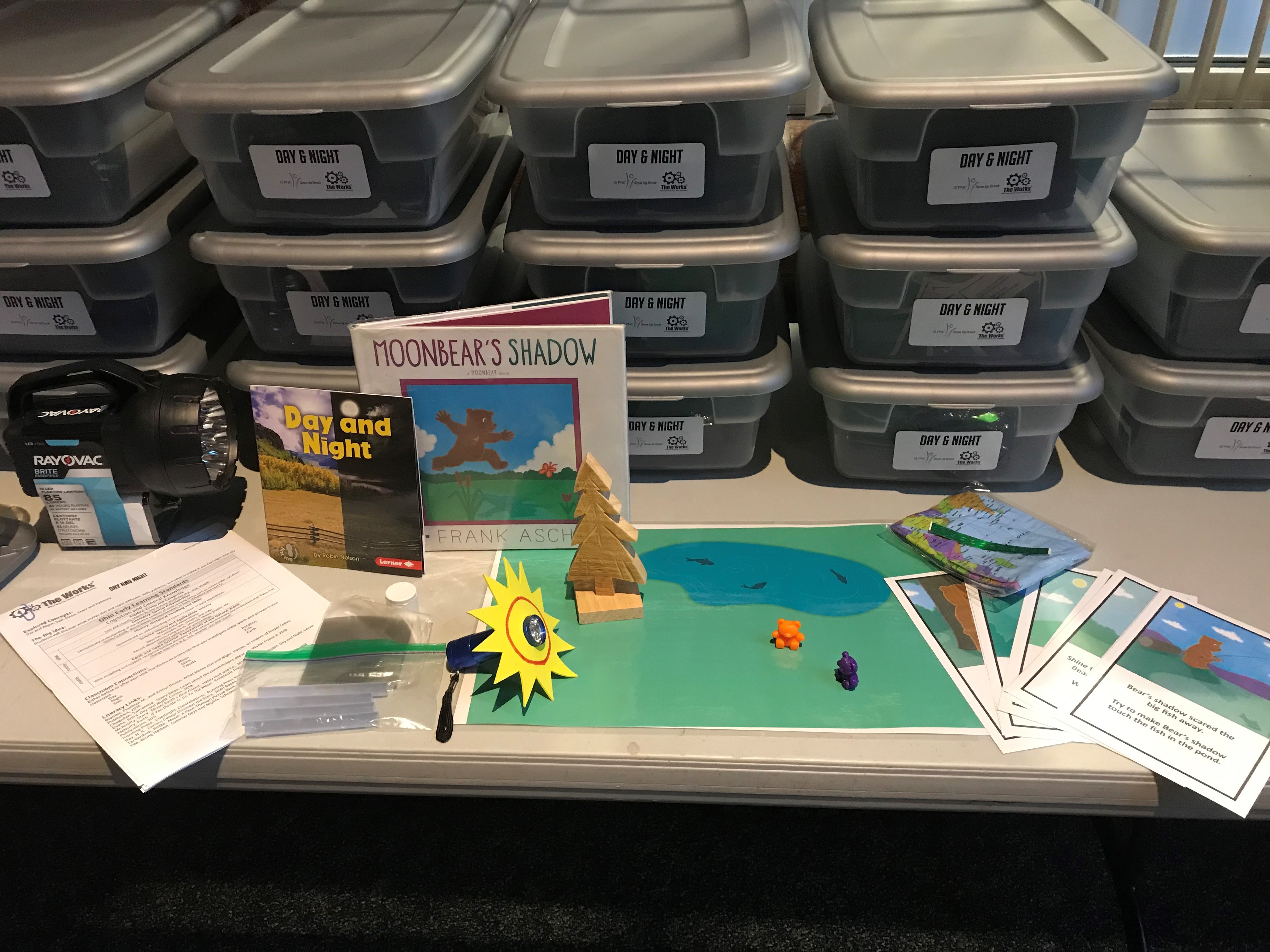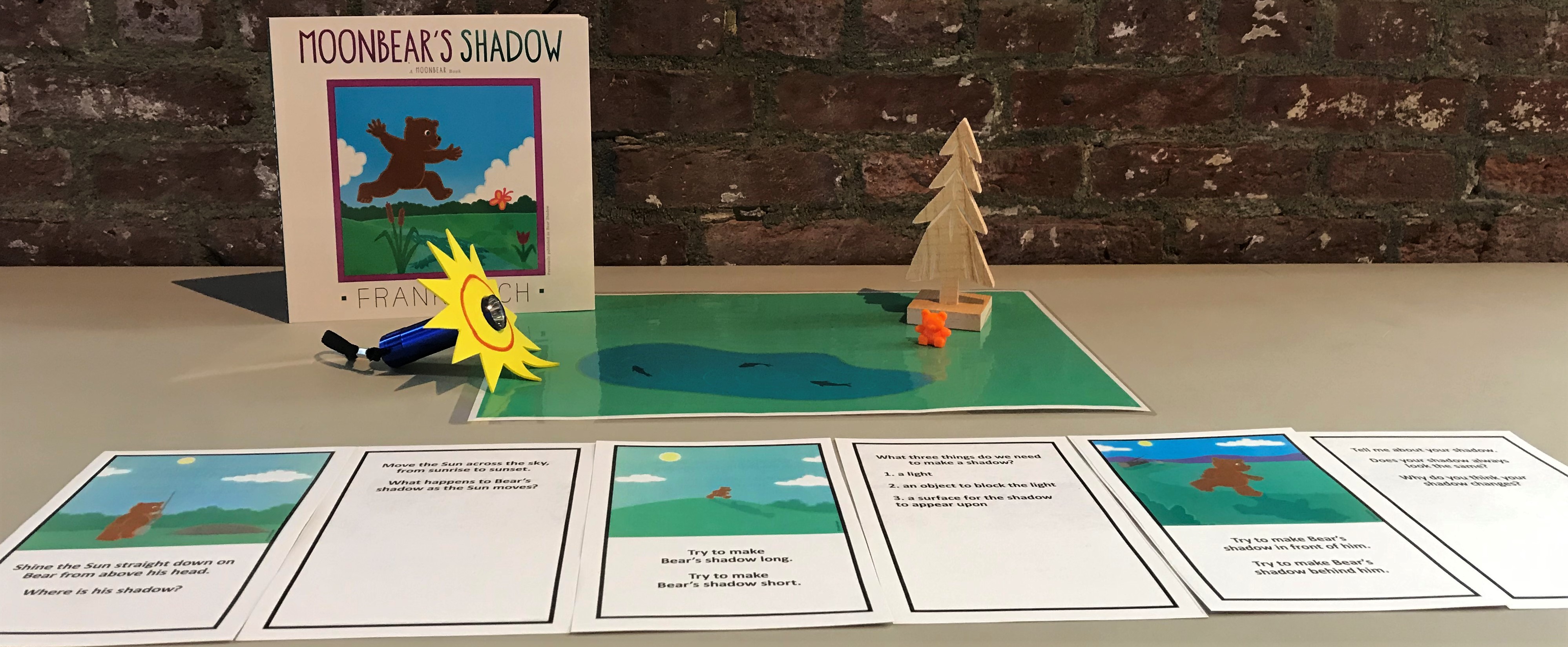Throughout the fall and winter, The Works: Ohio Center for History, Art & Technology worked with twenty preschool teachers and their students to explore the concepts of Day and Night. The goal with this preschool program is for students to discover what makes day and night different, recognize daily patterns, and discover what is visible in the daytime and nighttime sky. Designed as a multi-touch program, we were able to work with students in their school as well as in SciDome Planetarium at The Works. Teachers also receive additional support and training through curriculum supplements and a professional development workshop. This year long program was supported in part by a PNC Grow Up Great grant.
To begin, we visited the classrooms and explored the difference between day and night. We ask students what causes day and night, sorted day and night images, and created examples of daytime and nighttime activities. Students were excited to learn that day and night are caused by The Earth’s rotations and could quickly identify that change using a model of the Earth and Sun. Students then recorded their observations of what they could see during the day and night by completing drawings of daytime and nighttime. In addition, the students were asked to draw pictures to represent certain vocabulary words [e.g., Sun, Moon, Earth, and star].
Following our visits to their schools, students visited the SciDome at The Works where they could explore nighttime during the day. During these sessions, we again reviewed what could be seen during the day and night, created a chart together, then viewed the change from day to night in our SciDome. Students were amazed to watch the sun rise and set above them, something they do not often have a chance to see. They were also eager to share with their parents and our other educators that the change was due to the motion of The Earth.
Our biggest goal for the program experience was to leave students and teachers with more to explore, engage with, and discover beyond our initial interactions. We did this in many different ways, including recommended activities to scaffold learning before and after each visit, literacy connections and vocabulary highlights to build scientific literacy, and ongoing teacher support to help them expand their students’ understanding.
As part of our teacher support, we created a curriculum pack and provided a classroom supply kit to encourage further exploration. This was an important supplement to the school and museum visits, as the participating schools all serve economical underprivileged youth.
Materials for the kits were compiled from the Astronomical Society of the Pacific, NISE, Big Astronomy, and the Exploratorium. (See below file PNC GUG Day Night PD.PDF. for curriculum outline.)
During the professional development workshop, we walked through ideas that students may have about what makes day and night different and exploring characteristics of day and night. Teachers were provided with flashlights, globe beach balls, and star stickers to help them model the rotation of Earth and how that relates to the change from day to night. We extended the investigation to explore the relationship between light and shadows as well as the apparent color of the sky. One of the activities we created for this was the Bear’s Shadow activity from the NISE Net Explore Science Earth & Space toolkit.
The teachers loved the ability to directly include literacy with the science explorations and were looking forward to reading the book with their students, sharing the challenge cards, and engaging in an extension on shadows in their classrooms.
Next, we moved into an exploration of night. Night sky explorations included a viewing of common constellations and their stories, the moon, and moon phases and stories. We also incorporated an activity about Light Pollution from Big Astronomy to get teachers and students thinking about changes that occur in their neighborhoods and how the night sky may look different depending on their neighborhood.
Overall, the teachers really enjoyed the time together sharing and learning new ways to address familiar concepts. They were excited to learn new and engaging ways to explore with their students.
If you want to learn more about this teacher professional development training, please contact Rori Leath, Director of STEM Education, at [email protected].



